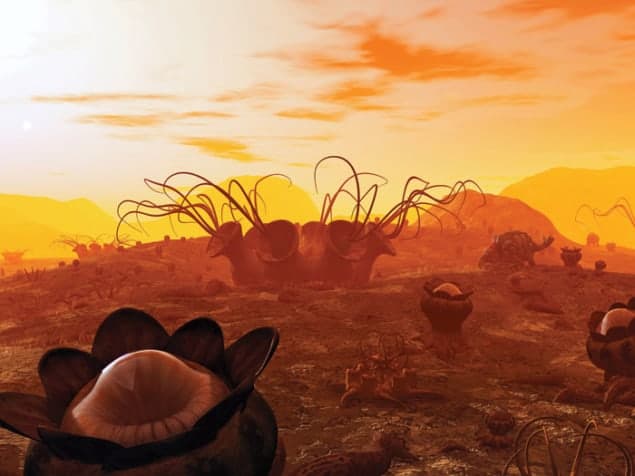Dimitra Atri reviews Goldilocks and the Water Bears: the Search for Life in the Universe by Louisa Preston

Is there life beyond Earth? This fundamental and as yet unresolved question has long confronted humanity. With a limited understanding of the natural world around us for most of our history, this topic has been – and continues to be – a major theme in fiction. It is not only the likelihood of finding life beyond Earth, but also understanding the relationship between life and where it could emerge in the physical universe, that gave birth to the field of astrobiology. Thanks to huge advances in both technology and our understanding of the cosmos, the field of astrobiology has taken great strides in recent years. In Goldilocks and the Water Bears: the Search for Life in the Universe, author Louisa Preston traces the path of these developments in a beautiful narrative that is easy to comprehend while still being scientifically accurate.
The book opens with science fiction’s take on aliens, before going into the history of astronomy and the beginnings of astrobiology. From classic tales like HG Wells’ The War of the Worlds, to popular films that deal with everything from time travel to space invaders – such as Star Trek, Interstellar and E.T. the Extraterrestrial – Preston describes how extraterrestrial life is depicted in a range of English-language film, television and literature. The book then moves on to the basic science of what actually constitutes life, how one could define it and the fact that carbon is a basis for all Earth-based life forms.
In many ways, astrobiology transcends any single discipline – instead, it involves everything from cosmology to geobiology, making it a truly interdisciplinary endeavour. In order to understand the likelihood of life existing beyond Earth, we first need to understand the diversity of life on Earth, its evolution, and the physical conditions that allowed life to arise and thrive in the first place. The book talks about the importance of molecules such as DNA and RNA; the mechanisms and sources of energy that sustains life; the suitability of specific environments, and the importance of water including the liquid’s origins and even the possibility of life without water.
To truly fathom where life beyond Earth may exist, we also need to understand the prevalent planetary conditions within our solar system, as well as in an ever-increasing list of known exoplanets. The middle chapters of the book dig into the specific astronomical conditions that led to the development of terrestrial planets – such as heavy metallic elements – before focusing on planetary sciences. Preston – an astrobiologist and planetary geologist at the University of London – goes into the details of how exoplanets are detected using current techniques and looks towards the telescopes of the future. As the title of the book suggests, she also writes about habitable zones – from galaxy-wide Goldilocks “zones of metallicity” to smaller-scale habitable zones within a stellar system.
Star–planet interaction is one of the most researched subjects when it comes to habitability. Frequent news stories cite the discovery of new “habitable planets” and this popular topic of discussion has captured the attention of both the media and the public alike. However, most non-scientists do not know the criteria upon which habitability is determined. Although this topic is discussed at several places in the book, given the great amount of public interest, Preston could have gone into more detail on the topic. The book could have further educated the reader on how habitability is defined, explained how many factors such as the different types of stars, orbital radii and planetary atmospheres come into play and how a Goldilocks zone evolves with the evolution of the star itself.
Even though we have a fairly good understanding of how life evolved on our planet, our understanding of its origin is limited. Astrobiology has had much to gain from state-of-the-art telescopes and planetary probes, together with improvements in theoretical modelling. A growing area of research is to understand the physical underpinnings that drive life at the most fundamental level. A lot of work has been done on the link between life and the thermodynamic concept of entropy, and the computational “systems biology” approach to understanding life. These efforts are of tremendous interest in astrobiology, and as a physicist, I feel that these concepts should have been included too.
Preston does remind the reader that life can survive in surprisingly extreme conditions, before describing a variety of extremophiles, including the titular “water bears”, and discussing the known envelope of life. If I were to suggest reading just one chapter of the book, it would be chapter eight, titled “Extraterrestrial worlds: life not as we know it”. The section is thought-provoking and talks about possible life forms on other planets. The author describes how the physical, chemical and geological environment on our planet affected the evolution of life and relates it to other planetary conditions that we know of. She also talks about the production of possible biosignatures and how one could observe them with sophisticated telescopes as well as how to tell them apart from other non-biological mechanisms that could produce similar signatures or “false positives”. Preston also outlines how physiological characteristics such as bone density, skin tone and visual organs would vary wildly, even allowing for “sky whales” that could fly through alien clouds.
The breadth of expertise required to cover all aspects of astrobiology is very challenging and makes this a difficult book to write. Overall, despite some minor weaknesses, I enjoyed the book and would recommend it to high-schoolers and undergraduates as an introductory astrobiology book.
- 2016 Bloomsbury £16.99 288pp



